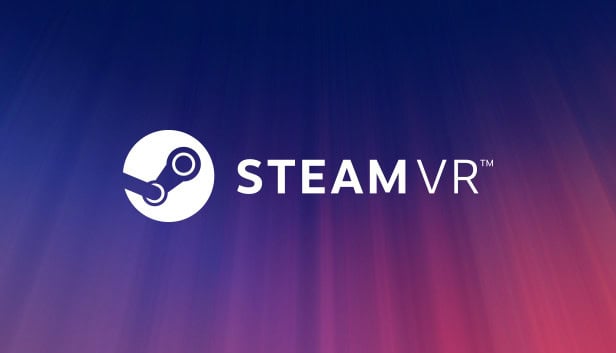The SteamVR Performance Test, once a useful tool for gamers to check if their system could handle VR, is no longer available on the Steam Store. As announced by Valve, this tool measured your system’s rendering power to see if it could run VR content at 90fps. This move leaves many VR enthusiasts searching for alternative ways to test their systems.
Now, users need different methods to check VR readiness. SteamVR still offers performance graphs, showing real-time frame rates. This isn’t as detailed as the Performance Test, but it can help users identify potential issues. Meanwhile, past users of the SteamVR Performance Test are wondering about current alternatives to ensure their systems can still handle VR.
The removal of the SteamVR Performance Test has left a noticeable gap. Gamers who relied on it must now look for other software solutions or use built-in tools to gauge their PC’s VR capabilities. The absence of this test changes how users approach VR system performance checks.
Alternatives to SteamVR Performance Test
Why is SteamVR Performance Test Gone?
Valve, the company behind SteamVR, quietly removed the SteamVR Performance Test from its platform in August 2022. The exact reasons are unclear, but it’s likely due to the test’s age and the evolving landscape of VR hardware. The test was no longer providing accurate results for newer systems and headsets. This left VR enthusiasts without a reliable way to gauge their PC’s VR readiness.
Alternative Tools for VR Performance Testing
| Tool | Pros | Cons |
|---|---|---|
| OpenVR Benchmark | Open-source, actively maintained, detailed results | Less user-friendly, requires some technical knowledge |
| VRMark | Easy to use, visually appealing, provides a VRMark score | Paid software, less detailed results than OpenVR Benchmark |
| 3DMark (with VRMark feature) | Comprehensive benchmarking tool, includes VRMark | Primarily a general PC benchmarking tool, VRMark might be overkill for some users |
Other Options:
- In-game benchmarks: Some VR games offer built-in benchmark tools, which can be a good way to test performance in a real-world scenario.
- Manual testing: You can try running a VR game you’re interested in and adjusting the graphics settings to see how your system handles it. This might require some trial and error.
What to Look For in a VR Performance Test
A good VR performance test should provide you with the following information:
- Frame rate: The number of frames displayed per second (fps). A higher frame rate generally means a smoother, more comfortable VR experience.
- GPU and CPU utilization: How much of your system’s resources are being used. High utilization could indicate a bottleneck.
- Detailed analysis: Information on specific areas where your system might be struggling, such as rendering, physics, or AI.
Choosing the Right Tool for You
The best VR performance test for you will depend on your needs and technical expertise. If you’re comfortable with some technical details, OpenVR Benchmark is a great free option. If you prefer a simple, easy-to-use tool, VRMark or 3DMark are good choices, but they come with a price tag. In-game benchmarks and manual testing can also be effective if you’re only interested in a specific game’s performance.
Key Takeaways
- SteamVR Performance Test is no longer available.
- Users must now rely on alternative methods to check VR readiness.
- The change impacts how gamers evaluate their PC’s ability to handle VR.
Understanding SteamVR Performance Test and Its Discontinuation
The SteamVR Performance Test, developed by Valve, was a tool to measure a PC’s ability to handle virtual reality. It was recently removed from the Steam Store, affecting users and the VR industry.
History and Purpose of SteamVR Performance Test
Valve created the SteamVR Performance Test to check if a PC could run VR content smoothly. It used a two-minute sequence from the Aperture Robot Repair VR demo. The test measured rendering power and determined whether the system could run VR content at 90fps. It helped users see if their setup was “VR Ready.” This was important when the HTC Vive was popular because it required a strong GPU and CPU, such as the GTX 970, to meet VR demands.
Factors Leading to the Discontinuation
There are several reasons why the SteamVR Performance Test was discontinued. Advances in VR technology might have made the test outdated. Newer GPUs and CPUs can handle VR more efficiently, reducing the need for such tests. Additionally, the VR industry has moved towards other benchmarks and tools. Valve may also no longer maintain the test or the associated Unity asset. These factors contributed to its removal from the Steam Store, and it has left some users with an unlaunchable app.
Implications for Users and the VR Industry
Removing the SteamVR Performance Test has implications for users and the VR industry. Users who relied on the test to gauge their system’s VR readiness need to find alternatives. New VR users might struggle to ensure their setups meet VR requirements. For the VR industry, the discontinuation reflects a shift towards newer standards and tools. It indicates that Valve no longer sees the test as crucial for evaluating VR performance. This shift could drive other companies to develop updated benchmarking tools for VR systems.







